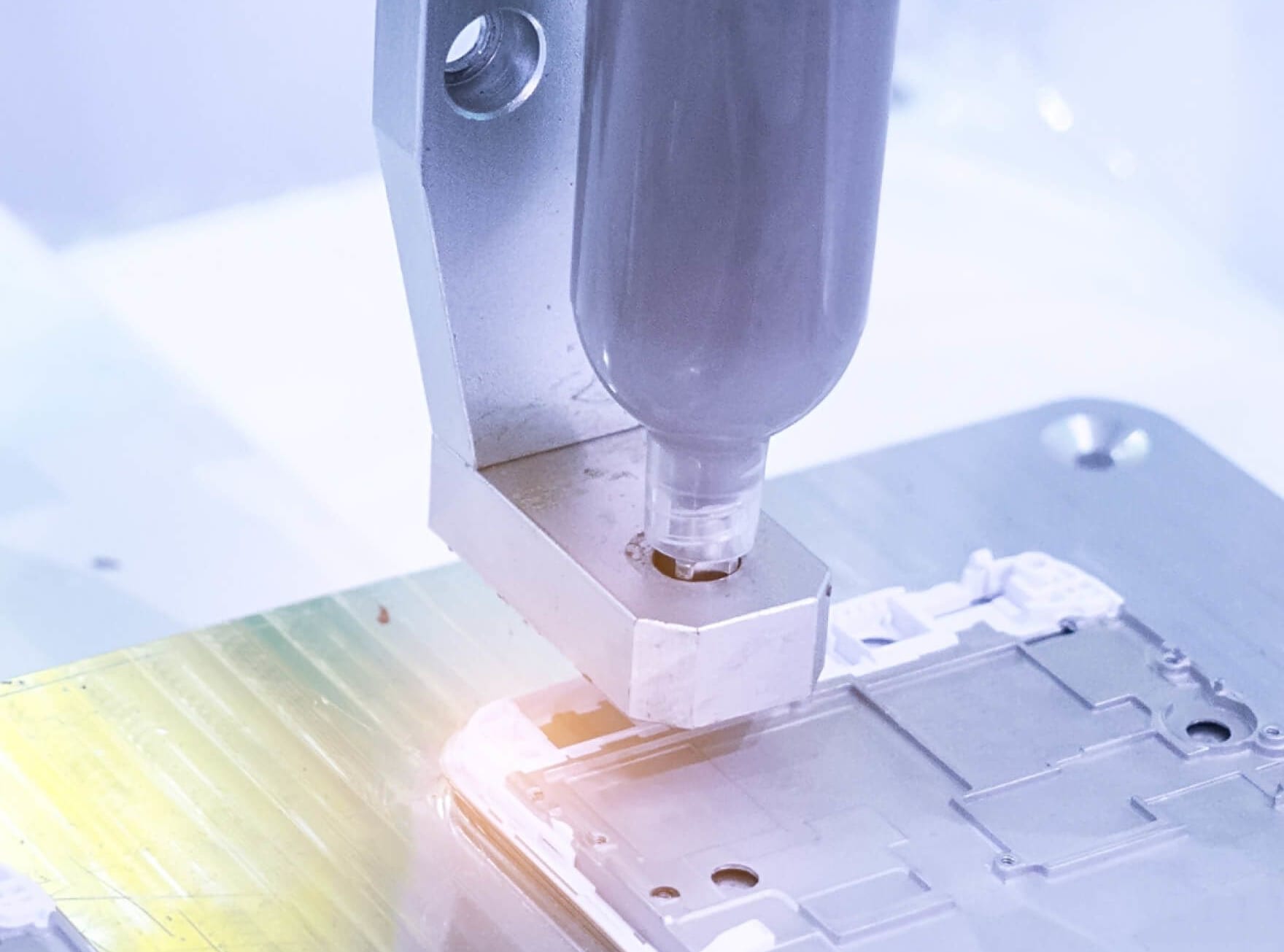Knowde Enhanced TDS
Identification & Functionality
- Product Type
- Technologies
Features & Benefits
Applications & Uses
- Markets
- Applications
- Application Method
Properties
- Physical Form
- Typical Properties
- Electrical Properties
- Thermo-Mechanical Properties
| Value | Units | Test Method / Conditions | |
| Optical Transmission | High | - | - |
| Fungus Resistance | Non-nutrient | - | - |
| Useful Temperature Range | -55 to 110 | ºC | - |
| Thermal Stability | 200 | °C | - |
| Value | Units | Test Method / Conditions | |
| Insulation Resistance Cycle 1 (1 to 3 mil film, 25°C, 50% R.H.) | 1 x 10^15 | ohms | - |
| Insulation Resistance Cycle 4 (1 to 3 mil film, 65°C, 95% R.H) | 4 x 10^10 | ohms | - |
| Insulation Resistance Cycle 7 (1 to 3 mil film, 65°C, 95% R.H.) | 5 x 10^10 | ohms | - |
| Insulation Resistance Cycle 10 (1 to 3 mil film, 65°C, 95% R.H.) | 2 x 10^10 | ohms | - |
| Insulation Resistance Cycle 10 (1 to 3 mil film, 25°C, 50% R.H., after 24 hours) | 2 x 10^13 | ohms | - |
| Leakage Rate (Before thermal shock, microamperes) | max. 10 | - | - |
| Leakage Rate (After thermal shock, microamperes) | max. 10 | - | - |
| Volume Resistivity | 1.1 x 10^14 | ohm-cm | - |
| Dielectric strength | 1300 | volts/mil | - |
| Dissipation Factor (100 Hz) | 0.011 | - | - |
| Dielectric Constant (at 100 Hz) | 4.1 | - | - |
| Chloride | max. 40 | ppm | - |
| Bromine | max. 5 | ppm | - |
| Sulfate (SO4) | max. 10 | ppm | - |
| Phosphate (PO4) | max. 30 | ppm | - |
| Nitrogen (NOx) | max. 5 | ppm | - |
| Value | Units | Test Method / Conditions | |
| Tensile Modulus (-40°C) | 4000 | MPa | - |
| Tensile Modulus (+25°C) | 2000 | MPa | - |
| Tensile Modulus (+80°C) | 670 | MPa | - |
| Glass Transition Temperature | 103 | °C | - |
| Coefficient of Thermal Expansion | 100 | ppm/°C | - |
| Hardness (at 25°C cure) | 55 | Shore D | - |
Regulatory & Compliance
- Certifications & Compliance
Safety & Health
- Safety & Handling
- Use with adequate ventilation.
- Keep away from sparks and open flames.
- Avoid prolonged contact with skin and breathing of vapors.
- Wash with soap and water to remove from skin.
Storage & Handling
- Shelf Life
- 6 months at 21°C
- Suggested Handling
111-27 can be used as-is but further thinning for spray and/or dip coating may be accomplished by adding MEK or acetone for faster drying or xylene or 127-22 for slower drying. Thinned material should be used within 12 - 16 hours.
- Suggested Curing
111-27 features a quick setup time at elevated temperatures but also can be cured at ambient temperatures. For good, cured properties one of the following cure schedules will be a good starting profile but end user is advised to experimentally determine temperature and time best suited for individual applications.
Condition Time Temp. Tack-free time (0.001 - 0.003") 30 - 90 min. 25°C (@30- 50% RH)
Bulk properties develop 24 hr. 25°C (@30- 50% RH)
Full cure 7 days 25°C (@30 50% RH)
Full cure 2 hr. 60°C Full cure 3 min. 130°C*1 *1-When used as an encapsulant bubbles may form using 130°C cure
- Shelf Life
Shelf Life: 6 months at 21°C. Product is moisture sensitive so keep containers closed to avoid contamination. It is highly recommended to purge opened containers with an inert gas blanket (N2, Ar, etc.) before resealing to preserve shelf life as moisture may cause polymerization.

